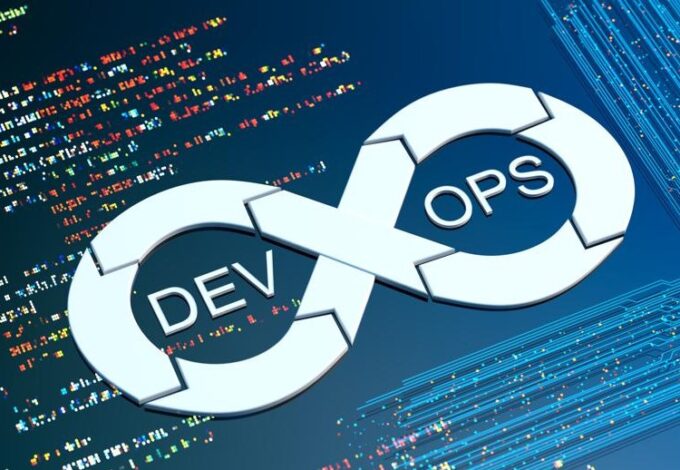DevOps is the buzzword in the modern IT world. Some businesses envision it as a complex set of technologies and applications, while others consider it a panacea from all organizational faults and errors.
In fact, MindK.com is a practical, flexible tool for software developers, giving them the upper hand in process acceleration, automation, and optimization. So, if you want to take your organization to the next level, here is a handy guide on DevOps implementation from scratch.
Why Would You Need DevOps?
First, let’s clarify that not every company will benefit from DevOps implementation. Thus, you need to conduct a thorough audit of your processes and procedures before considering this step. In some cases, you will find that your teams are coping with the tasks just right, and you don’t need any automation or optimization. But if you notice that:
- Your departments work in an isolated manner and have little communication with one another;
- QA testing doesn’t cover your products comprehensively;
- You notice a large number of errors identified after the product’s release;
- Your users start abandoning you because of eroded trust and quality complaints;
- Your company spends too much time on updates and error fixes;
- The infrastructural deployments take too much time;
It’s time to consider DevOps as your next big move.
What Will DevOps Give You?

We all know that DevOps offers a conceptually new approach to software development. It helps you achieve numerous improvements, such as greater efficiency and functionality, smooth collaboration, and lower production failure rates, with the help of innovative practices and technologies. Let’s see what you can expect from DevOps integration in your software development routines.
1. Better Communication
As its name suggests, DevOps is meant to merge the functions of development and operations teams into one collaborative department. In this way, all staff members engaged in the software development pipeline get a single, favorable environment for communication and smooth collaboration, thus achieving better production outcomes.
2. Software Failure Reduction

The removal of departmental segmentation can also solve the problem of different infrastructural configurations. This change reduces software failure rates as the need to move the product across testing, development, and production environments disappear.
3. Improved Trust
Your clients will be more loyal to your software products if they feel the commitment to quality and see no errors in the apps after release. Individuals and businesses alike want to use high-quality software, and if they get it from you, they’re sure to stay.
4. Automated Testing

Continuous testing should be done with projects under development, which is often cumbersome and prone to error if human beings do it. But with automated testing enabled by DevOps tools, you receive greater quality and higher error detection rates without draining your organizational resources.
5. Quicker Releases
Quick time-to-market is every software developer’s dream in the highly dynamic and competitive digital market. So, with DevOps, you will finally nail that competitive advantage by ensuring fast, reliable releases and app updates without undermining their quality.
What Will DevOps NOT Give You?

Again, it’s vital to keep in mind that DevOps is not a panacea; this approach cannot solve in-depth structural problems and save your business if you have significant problems. Here are the things you shouldn’t expect from DevOps adoption:
- Automation can do you a favor, but it’s helpless if you don’t introduce fundamental changes in your organizational culture.
- Buying access to DevOps tools does not equal DevOps adoption. The latter is a lengthy, multi-step process that will require your commitment and hard work.
Steps to DevOps Implementation
So, once you’ve conducted the preliminary assessment of your company’s situation and IT processes and have decided to implement DevOps, let’s stick to the following plan.
1. Setting Up the Initiative

The first step in introducing any large-scale changes is informing your team. It’s best done with the help of your CIO, who communicates the change to the operations and development staff and explains the roadmap. You should also assign responsible staff members to monitor the DevOps implementation process and allocate the proper human and financial resources.
2. Strategizing
Next comes the development of the implementation strategy. It would help if you created a favorable environment to blend your company’s development and operations functions, set clear expectations about the process’s outcomes, and ensure everyone’s commitment to the change.
3. Containerizing Apps

Containerization of apps under development can maximize your products’ reliability, especially when they need to pass from one department to another one in the process of creation, QA testing, and deployment.
The DevOps tool called Docker is an effective method of app containerization, which ensures stable running of the digital product regardless of the IT environment in which it is put.
4. CI/CD Tool Integration
The DevOps universe offers a variety of tools for continuous integration (CI) and continuous deployment (CD). Thus, you can choose among many options depending on the scale of your business infrastructure.
For instance, Ansible will match a small business infrastructure, while Kubernetes is better suited for large-scale software development operations. You can also consider Jenkins, Bamboo, of GoCD to achieve sizable gains in configuration management and software deployment.
5. Automation and QA Introduction

As all businesses introducing DevOps target faster delivery, you need to automate your testing procedures properly. Still, keep in mind that not all testing can be done automatically; some tests can be done only by humans, so you need to evaluate your testing needs and produce protocols for the ones that can be automated. It’s better to implement frequent testing (at least once every day) to avoid errors in the products entering production.
6. Performance Monitoring
Once you implement all the steps mentioned above, you’re ready for the full-cycle application performance monitoring. This procedure should be implemented to identify all performance issues and defects before the final launch. Besides, app performance monitoring gives valuable insights into the roots of the problem, letting you introduce systemic improvements.
Final Remarks
As you might see now, DevOps can benefit any development business regardless of its scale and focus. With this innovative technology toolkit, you can optimize the critical business processes the way you find necessary. As a result, your performance and time-to-market will grow without quality compromises – an ideal mix for any software provider. So start building your in-house team today or make sure to outsource these tasks to the right people. Learn more here.








